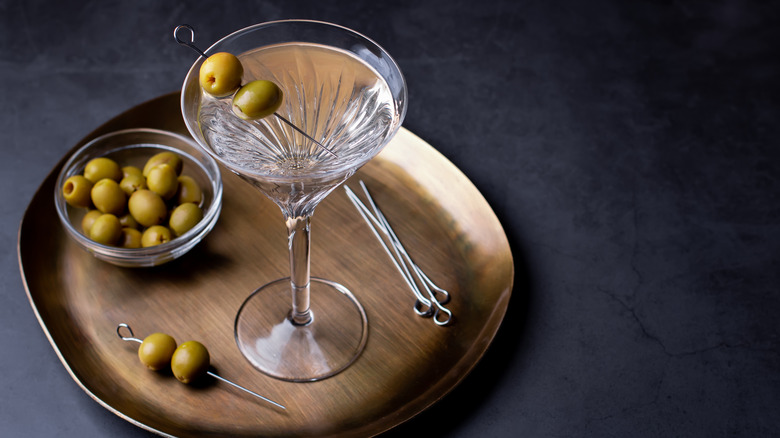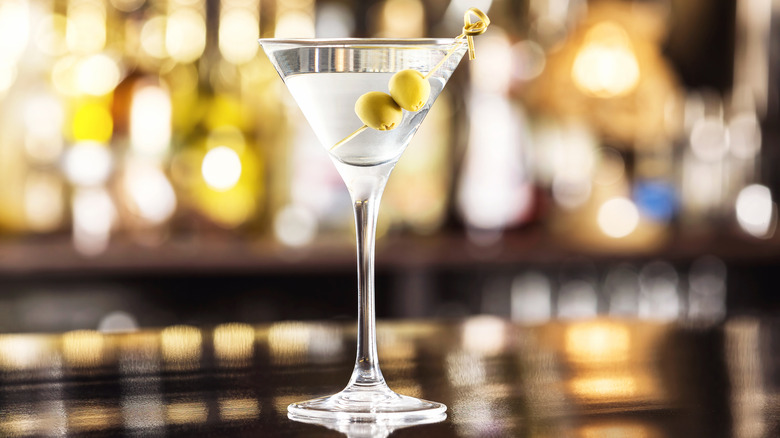Is There A Preferred Ratio For A Dirty Martini?
Martinis are famous for being controversial — and the only cocktail you would order at a bar and be expected to tell the bartender exactly how to make. You could order one shaken, James Bond-style, or stirred, as most mixologists prefer (via Los Angeles Times). You could also order a gin martini or a vodka martini, a wet martini or a dry martini, or a Vesper or a 50/50 Martini. But perhaps the trickiest of all is the darling dirty martini.
Allegedly invented in 1901, the dirty martini started with New York bartender John O'Connor muddling olives from the drink's traditional garnish, before it became de rigueur to simply add olive brine straight from the jar (per Liquor.com). Originally, martinis were sweeter and included higher amounts of vermouth than the ones we are used to today, but the popularity of bathtub gin during Prohibition skewed the ratios in favor of more gin, and by the 1930s, the martini required an accent that would balance out its newfound booziness (via Vinepair). Throw in an endorsement from Franklin Delano Roosevelt (per Slate), and you've got yourself a modern classic in the dirty martini.
When making this bracing, decadent cocktail, however, how can you be sure that it doesn't turn from delightfully savory into a mouthful of straight olive brine?
The magic dirty martini ratio
When using the right liquor and dry vermouth, the ideal amount of olive brine for a dirty martini might be higher than you'd expect. "Having served some of the biggest names in Hollywood, we've found the ideal number to be 2oz/.5oz/.75oz gin to vermouth to brine — it allows the drinker the opportunity to enjoy the earthy notes of the vermouth and punchy brine without overpowering the drink," explains Matt Landes of Cocktail Academy (via Forbes). That means you're actually adding more brine than vermouth.
You'll also notice that gin is the clear choice here over vodka. The salinity of the olive juice is an ideal match for the botanicals in gin, particularly the distinct juniper notes of a London Dry style gin such as Tanqueray (per Decanter). As for your garnish, Castelvetrano olives from Italy, which are sweeter and less briny than many other varieties, are extremely popular among bartenders for this kind of drink, as are French Picholine olives and Spanish Losada olives, according to Vinepair.
Make sure to chill your olives in advance so the room temperature brine doesn't distract from your ice cold cocktail (per Sipsmith), and you'll be imbibing like a president in no time.

